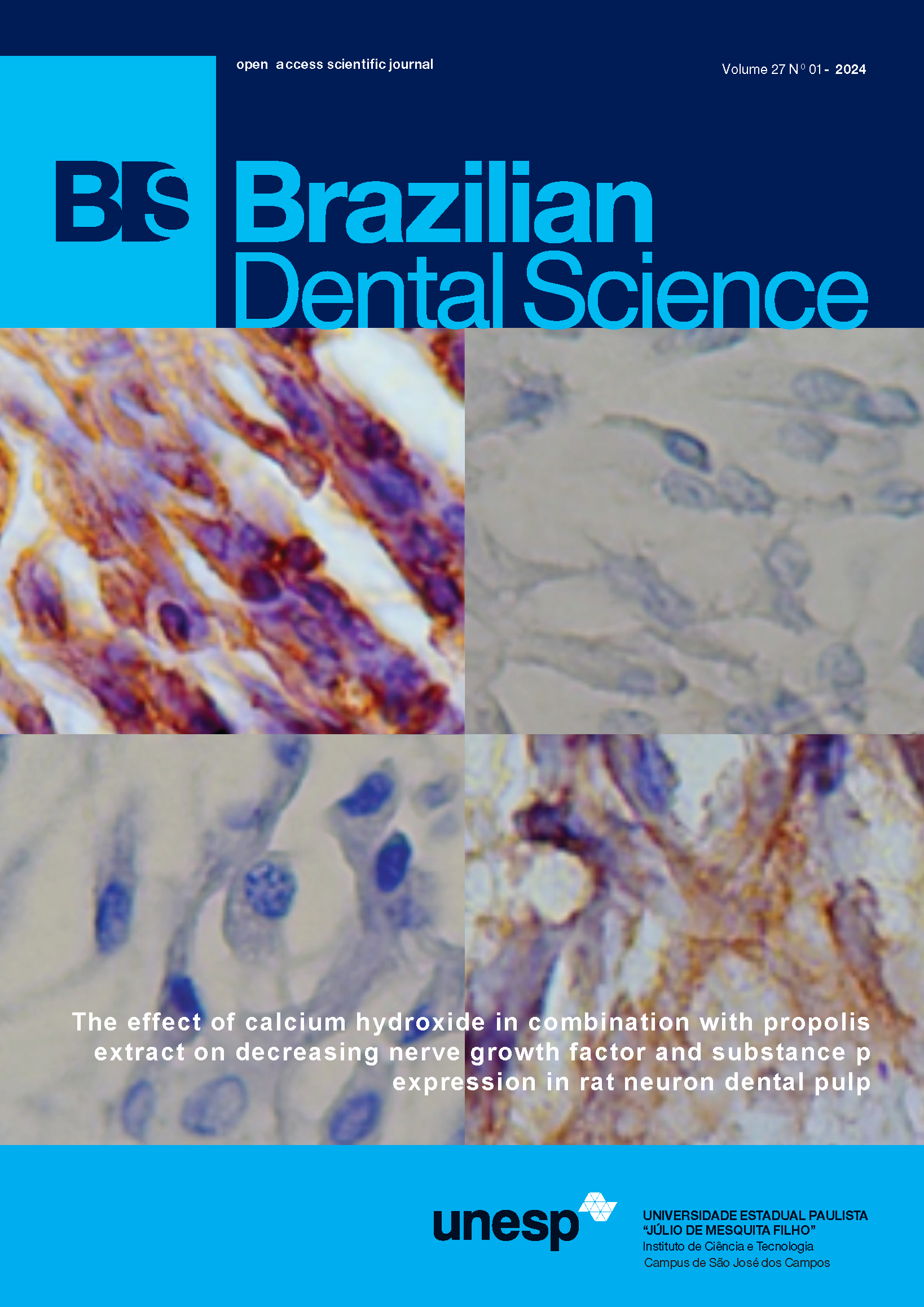Antimicrobial effect of methylene blue formulations with oxygen carrier at different pHs: preliminary study
DOI:
https://doi.org/10.14295/bds.2019.v22i1.1635Abstract
Objective: Evaluate methylene blue (MB) formulations containing oxygen carrier at different pHs in antimicrobial photodynamic therapy (aPDT). Material and Methods: Biofilms of Pseudomonas aeruginosa PA01 formed over acrylics specimens during five days were treated with aPDT using different formulations: MB/pH 7.4; MB/pH 5.6; MB/carrier pH 7.4; MB/carrier pH 5.6. Biofilms not exposed to treatment were used as a control. Blind examiner for the experimental groups performed the counting of colonies per ml suspension (CFU/ml). Two-way ANOVA was used to determine the effect of factors solvent (carrier vs water) and pH (7.4 vs 5.6). One-way ANOVA and post-hoc Tukey’s test was used to evaluate differences among the five groups (control; MB/carrier pH 7.4; MB pH 7.4; MB/carrier pH 5.6; MB pH 5.6). The Statistics 8.0 software was used (P<0.05). Results: All of photodynamic therapy groups showed significant reduction in P. aeruginosa compared to the control group. The solvent factor was not significant (P=0.18), while the pH factor presented statistical significance (P=0.01). When the carrier was used, MB formulation at pH 7.4 presented a statistically greater reduction of P. aeruginosa than the formulation with pH 5.6. Conclusion: The PDT using methylene blue formulations with oxygen carrier demonstrated potential for the treatment of localized infections by P. aeruginosa. MB formulations with oxygen carrier and pH 7.4 resulted in higher antimicrobial effect and should be considered for future studies with multispecies biofilms.
Keywords
Antimicrobial photodynamic therapy; biofilm; laser; Pseudomonas aeruginosa.




